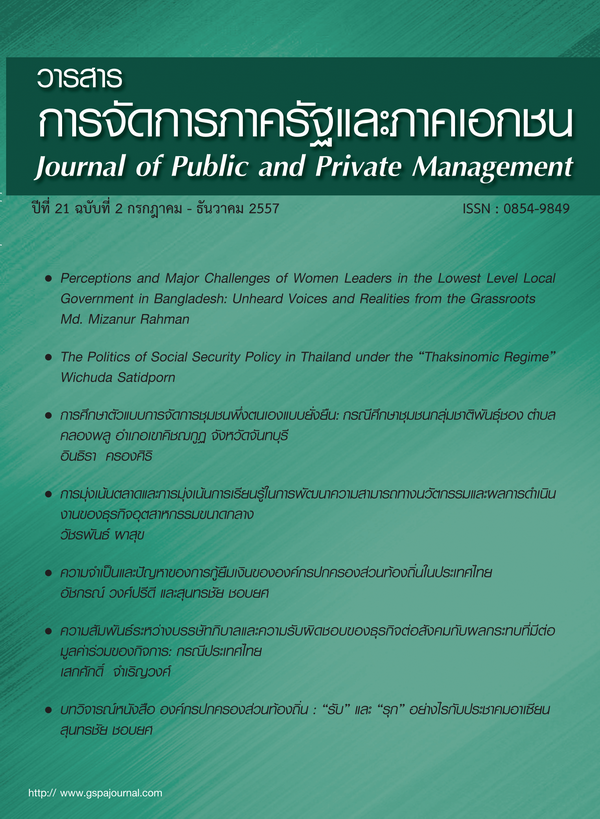The rationales behind Thai local administrative organizations’ decision to apply for loans
Keywords:
Local loans, local administrative organizationAbstract
This study examines the rationales behind Thai local administrative organizations’ decision to apply for loans from commercial banking institutions. Emphasis is placed on the Tambon municipalities and Tambon administrative organizations -the smallest local government units in Thailand. Apart from information from relevant legal and policy documents, in-depth interviews and a survey questionnaire are used to gain insights into the dynamics of local government decision making. Survey respondents and interviewers are chosen from local government administrators from all over Thailand.
This study finds that Thai small local authorities at the tambon (subdistrict) level have to rely on bank loans to finance their operations due to severe budget constraints. However, in applying for bank loans, Thai local officials in small jurisdictions lack sufficient knowledge in operations management (51%), in infrastructure planning and municipal government credit management (43.5%), and in environmental and social impact assessment techniques (40%).
This study recommends that the interior ministry create regulatory mechanisms that permit the Tambon administrative organizations to borrow from commercial banks with their constituents’ consent. The regulations should also require local authorities to encourage citizen participation in their decision-making process, particularly the decision to seek external loans to finance local government services. It is imperative that citizens are informed of every aspect of local fiscal and financial management. Finally, government and quasi-government agencies, such as the Department of local administration and Municipal Development Fund, should provide the small local authorities with training toolkits, advice, and assistance in the borrowing process, infrastructure planning, and environmental/social impact analysis.



